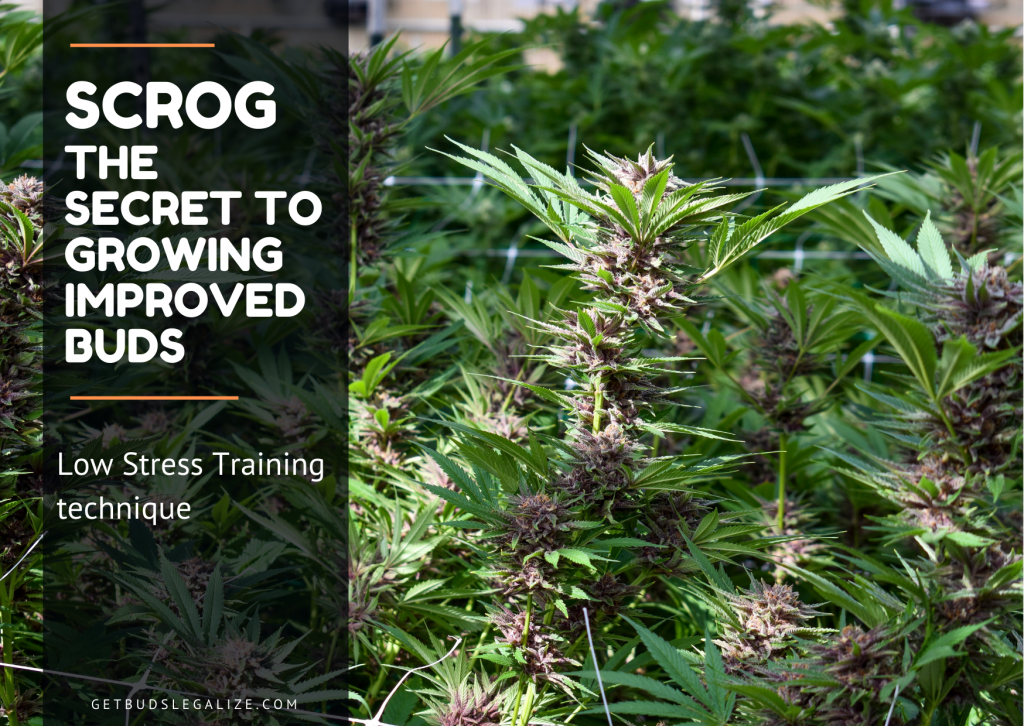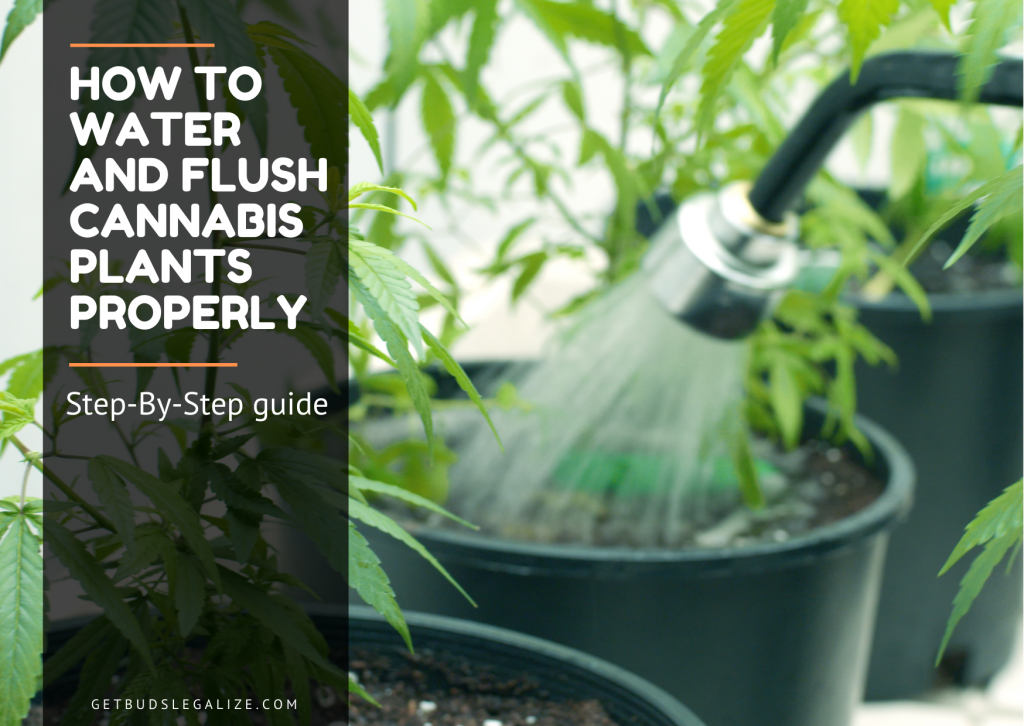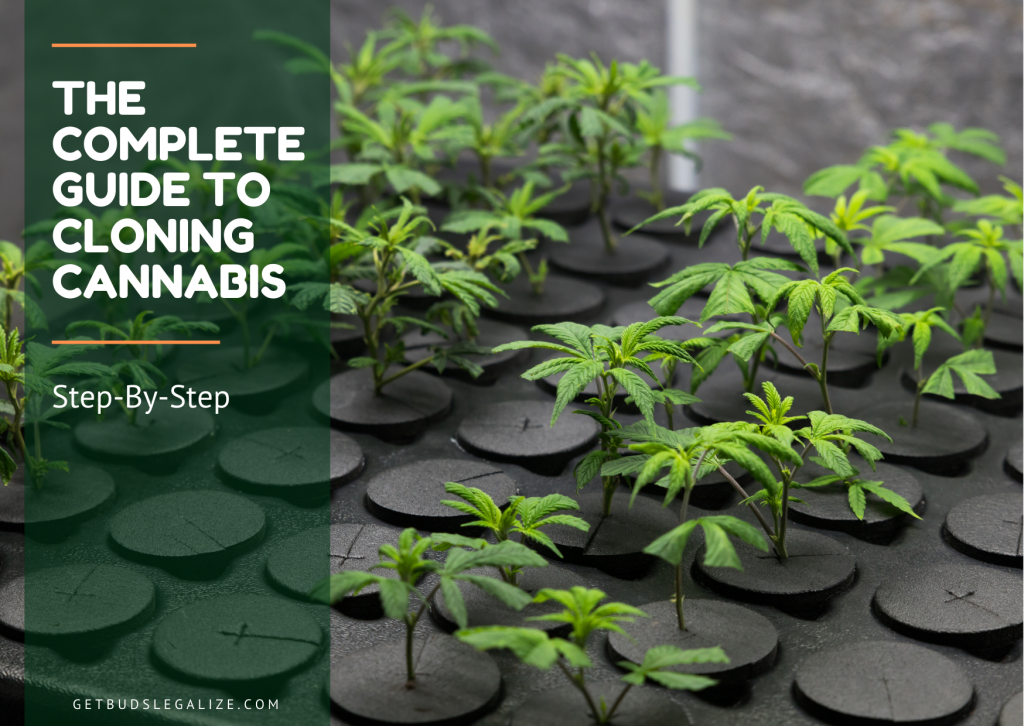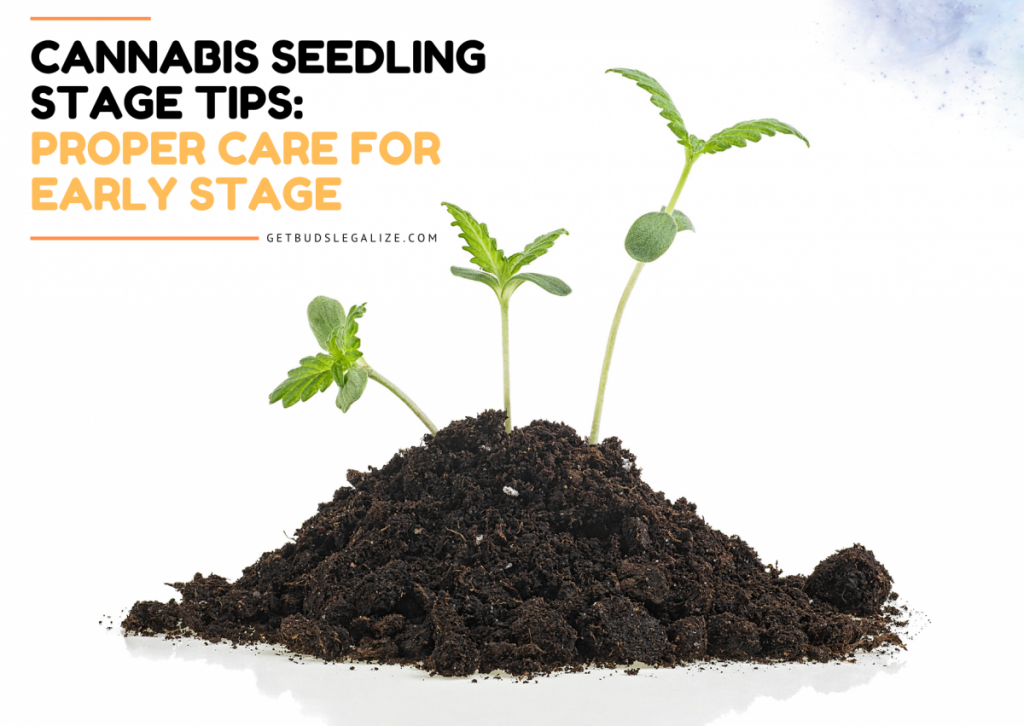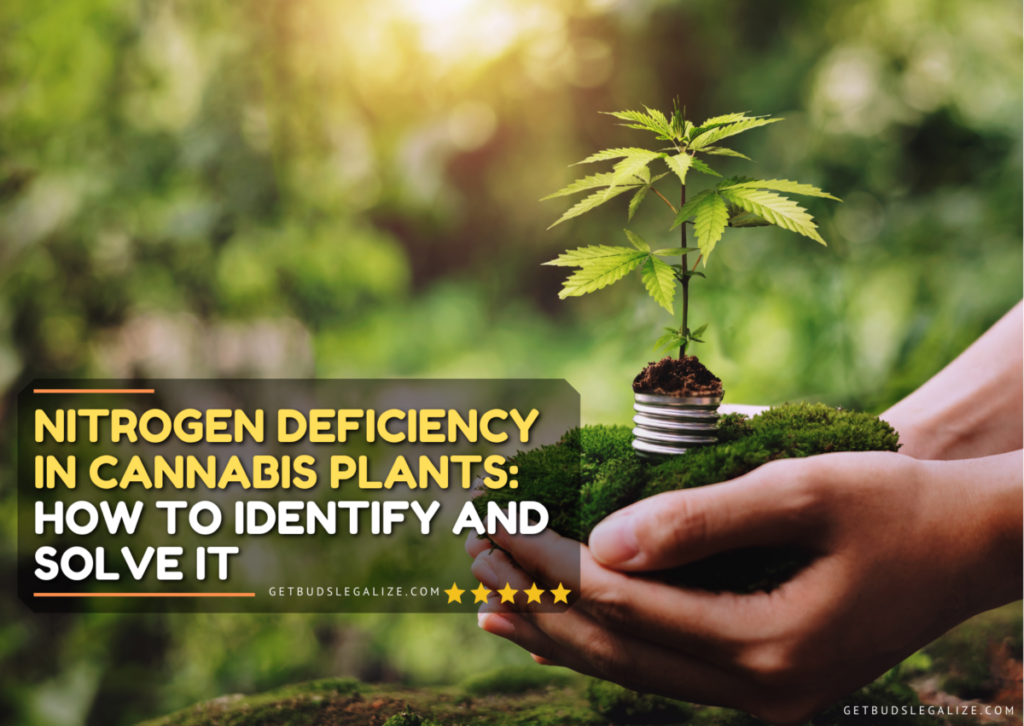Cannabis Cal Mag Deficiency: All You Need to Know to Fix
If you are growing cannabis, you may have heard of the importance of calcium and magnesium for your plants. These two minerals are essential for healthy growth and development, but they can also become deficient if not supplied adequately. In this blog post, we will explain why calcium and magnesium are important for cannabis plants, what are the symptoms of Cal Mag deficiency, and how you can treat it.
What Are The Benefits of Cal Mag, And Why Should You Apply It To Your Plants?
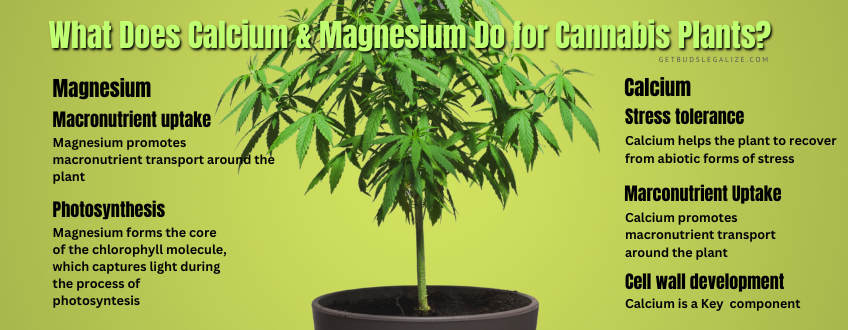
Calcium and magnesium are essential elements for plant growth, especially for cannabis. They often come together in Cal Mag supplements because they have complementary roles and optimal ratios. Calcium helps to strengthen cell walls, regulate enzyme activity, and transport nutrients. Magnesium is a key component of chlorophyll, the green pigment that enables photosynthesis. Applying Cal Mag supplements ensures that plants receive adequate amounts of both elements, which can improve their health, vigor, and yield.
However, applying calcium or magnesium separately can cause problems. Excess calcium can interfere with magnesium uptake, and vice versa. This can lead to nutrient imbalances and deficiencies, which can affect plant growth and quality. To avoid this, Cal Mag supplements provide a balanced ratio of calcium to magnesium, usually between 3:1 and 4:1. This way, growers can avoid overloading their plants with either element and ensure optimal nutrient availability.
What Causes Cannabis Cal Mag Deficiency?
Cannabis Cal Mag deficiency can be caused by several factors, such as:
- Extreme pH levels in the soil, either too acidic or too alkaline, affect the availability of calcium and magnesium to the plants.
- Nutrient imbalance, especially excess nitrogen, phosphorus, or potassium, can interfere with the uptake of calcium and magnesium.
- Low transpiration rate, which reduces the movement of water and nutrients through the plant tissues.
- Use of treated water, such as distilled or reverse osmosis water, which lacks essential minerals like calcium and magnesium.
- Using soft water, which has low levels of calcium and magnesium.
- Using coarse sandy soil or coconut fiber as the growing medium, which contains low levels of calcium and magnesium.
What Are The Symptoms of Cannabis Cal Mag Deficiency?

Cannabis Cal Mag deficiency can manifest in different ways depending on the stage of growth of your plants. However, some common signs are:
Signs of Cal Mag Deficiency During the Seedling Stage
The seedling stage is when your plants are most vulnerable because they have not developed a strong root system yet. Some of the symptoms during this stage are:
- Stunted growth
- Yellow and brown discoloration of leaves
- Weak stems
- Leaves that curl upward or downward
Symptoms of Cal-Mag Deficiency in Vegetative Stage
The vegetative phase is when cannabis grows rapidly and develops its branches and leaves. A Cal Mag deficiency during this stage can affect the plant’s ability to produce chlorophyll and perform photosynthesis. Some of the symptoms of calcium and magnesium deficiency in veg are:
- Brown or yellow spots or edges on leaves
- Slow rate of growth
- Crispy leaf tips
What a Lack of Cal-Mag Looks Like in the Flowering Stage
The flowering phase is when cannabis plants produce buds that contain high levels of cannabinoids and terpenes. A calcium and magnesium deficiency during this stage can affect the quality and quantity of the buds. Some of the cal-mag deficiency symptoms you may experience during this stage are:
- Brown and yellow spots on buds
- Brittle leaves
- Small and loose buds
- Small yields
How Can You Prevent and Fix Cannabis Cal Mag Deficiency in Plants?

Fortunately, there are some simple steps you can take to prevent or correct the calcium and magnesium deficiency in your cannabis cultivation.
1. Adjust the pH Level:
One of the main causes of cal mag deficiency is an improper pH level in the root zone. Cannabis plants prefer a slightly acidic pH of 5.5 to 6.5 in hydroponics and coco coir, and 6.0 to 7.0 in soil. If the pH is too high or too low, it can lock out the nutrients and prevent the plants from absorbing them.
To avoid this, you should always measure and adjust the pH of your water and nutrient solution before feeding your plants. You can use a pH meter or pH test strips to do this, and add pH up or pH down products to adjust the pH accordingly.
2. Provide Balanced Nutrition:
Another cause of Cal Mag deficiency is an insufficient or imbalanced nutrient supply. Cannabis needs a variety of macro and micronutrients to grow healthy and strong, and Cal-Mag is one of them.
To prevent and correct Cal Mag deficiency, you should provide your plants with a well-balanced fertilizer that contains adequate amounts of cal-mag, as well as nitrogen, phosphorus, potassium, sulfur, iron, zinc, manganese, boron, copper, molybdenum, and chlorine. You can use a complete base nutrient that has all these elements, or supplement with a Cal-Mag additive if needed.
3. Increase Transpiration Rate:
Another factor that can affect Cal-Mag uptake is the transpiration rate of the plants. Transpiration is the process by which plants lose water through their leaves, creating a negative pressure that draws water and nutrients from the roots. If the transpiration rate is too low, the plants will not be able to absorb enough Cal-Mag from the soil or solution.
To increase the transpiration rate, you should ensure that your plants have adequate airflow, humidity, temperature, and light intensity. You can use fans, humidifiers, dehumidifiers, heaters, coolers, and lights to create the optimal environment for your plants.
4. Use Suitable Water Sources:
The type of water you use to water your plants can also affect their cal-mag intake. Some water sources may have too much or too little Cal-Mag in them, which can cause either toxicity or deficiency in your plants.
Tap water, hard water, and rainwater are usually better options than distilled water, reverse osmosis water, or soft water, as they contain some natural minerals that can benefit your plants. However, you should always check the pH and EC (electrical conductivity) of your water source before using it, and adjust it if necessary.
5. Control Climate Conditions:
The climate conditions in your grow room or outdoor garden can also influence the Cal-Mag availability for your plants. Extreme temperatures, humidity levels, light intensity, and wind can stress your plants and reduce their ability to absorb nutrients.
To prevent this, you should try to maintain a stable and comfortable climate for your plants, with temperatures ranging from 18°C to 26°C (65°F to 79°F), humidity levels from 40% to 60%, grow light intensity from 400 to 800 PPFD (photosynthetic photon flux density), and moderate wind speed from 1 to 3 m/s (2 to 7 mph).
6. Apply Pre-mixed Cal-Mag Supplements:
If none of the above methods work, or if you want a quick fix for your cal mag deficiency problem, you can use a pre-mixed Cal Mag supplement that contains both calcium and magnesium in a readily available form for your plants. These products are usually sold as liquid or powder formulas that you can add to your water or nutrient solution according to the instructions on the label.
7. Test Soil Before Adding Supplements:
Before you apply any supplements to your soil-grown plants, you should always test the soil first to determine its pH level and nutrient content. This will help you avoid overfeeding or underfeeding your plants with Cal-Mag or other nutrients. You can use a soil test kit or a soil meter to do this and follow the recommendations on the package to adjust the soil accordingly.
8. Monitor Your Plants:
Finally, you should always monitor your plants closely for any signs of cal mag or other nutrient deficiencies You should check the leaves, stems, roots, and buds of your plants regularly, and look for any changes in color, shape, size, texture, or appearance.
If you notice any symptoms, such as yellowing, curling, or spotting of the leaves, you should act quickly and apply the appropriate remedy as soon as possible.
You should also keep track of your watering and feeding schedule, and record any adjustments you make to your water source, nutrient solution, pH level, EC level, or climate conditions. This will help you identify and correct any issues that may arise in the future.
How To Pick The Best Cal Mag Supplement For Your Grow?
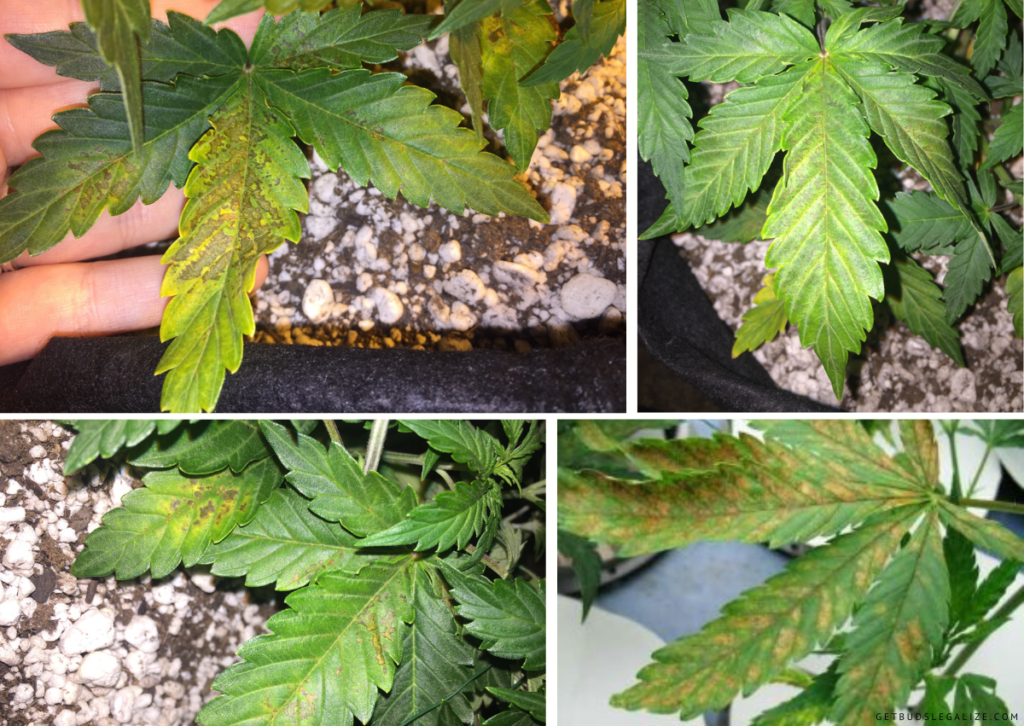
There are many Cal Mag supplements available on the market that can help you prevent or treat its deficiency in cannabis plants. Some of the most popular are:
- Cal-Mag Plus by Botanicare. This is a high-quality liquid formula that contains not only calcium and magnesium, but also iron, boron, zinc, manganese, molybdenum, cobalt, copper, iodine, and various vitamins and amino acids. These ingredients help improve the overall health and vitality of marijuana plants, as well as enhance their flavor and aroma. Cal-Mag Plus has a 2-0-0 NPK ratio, which means it has 2% nitrogen, 0% phosphorus, and 0% potassium.
- CaliMagic by General Hydroponics. This is a simple and effective liquid formula that contains calcium nitrate, magnesium nitrate, and iron EDTA. These ingredients provide the basic nutrients that cannabis needs to prevent or treat cal mag deficiency. CaliMagic has a 1-0-0 NPK ratio, which means it has 1% nitrogen, 0% phosphorus, and 0% potassium.
- Cal-Mag by Emerald Harvest. This is a versatile liquid formula that contains calcium nitrate, magnesium nitrate, and iron EDTA. It also contains humic acid and kelp extract, which are natural substances that help improve soil quality and stimulate plant growth. Cal-Mag has a 2-0-0 NPK ratio, which means it has 2% nitrogen, 0% phosphorus, and 0% potassium.
Calcium and Magnesium Deficiencies: Know the Signs and Act Accordingly
Calcium and magnesium are vital nutrients for your plants, as they support their growth, development, and health. A deficiency of these nutrients can cause various symptoms that affect the plant’s appearance and performance.
To prevent and treat Cal Mag deficiency, it is important to provide the plant with adequate amounts of Cal Mag, as well as maintain optimal growing conditions. By doing so, you can ensure that your cannabis plants grow strong and produce high-quality buds.
Frequently Asked Questions
Yes, you can. Excessive amounts of Cal-Mag can cause a nutrient lockout, which means that the plant cannot absorb other essential nutrients. This can lead to symptoms similar to a deficiency, such as leaf discoloration, curling, and wilting. To avoid overfeeding your plants with cal-mag, follow the instructions on the label of your nutrient solution and monitor the pH and EC levels of your water.
It depends on the severity of the deficiency and the stage of growth of your plants. Generally, you should see some improvement within a week or two after applying a Cal Mag supplement. However, some damage may be irreversible, especially if the deficiency occurs during the flowering phase. Therefore, it is important to prevent Cal Mag deficiency from happening in the first place by providing adequate amounts of these nutrients throughout the plant’s life cycle.
Yes, it can. If you catch the deficiency early and treat it promptly, your plant can recover and resume normal growth. However, some leaves may not regain their original color or shape, and you may need to prune them off to improve the plant’s appearance and health. Also, keep in mind that a Cal Mag deficiency can weaken your plant’s immune system and make it more susceptible to pests and diseases.
It depends on the quality and composition of your soil. Some soils are naturally rich in calcium and magnesium, while others are deficient or have imbalanced ratios of these nutrients. You can test your soil’s pH and nutrient levels using a soil test kit or send a sample to a lab for analysis. If your soil is low in Cal-Mag, you can amend it with organic or synthetic sources of these nutrients, such as dolomite lime, gypsum, Epsom salt, or commercial cal-mag products.
Cal-Mag is a common supplement for cannabis growers who use soil. It can help prevent or correct deficiencies that may occur due to low-quality soil, hard water, or high-intensity LED grow lights. Cal-Mag should be used as a preventive measure or at the first signs of deficiency, such as yellowing or curling leaves, stunted growth, or poor bud formation.
This is a rare but possible condition that can affect weed plants if they receive too much calcium or magnesium. This can happen if the soil is already rich in these nutrients, or if the grower overfeeds the plants with Cal Mag supplements. The toxicity of Cal-Mag can cause a nutrient lockout, which means that the plants cannot absorb other essential nutrients from the soil. This can lead to symptoms such as leaf burn, brown spots, wilting, or reduced yield and quality.
The signs of deficiency of magnesium appear on the lower & older leaves with a light green or yellow coloring that will begin to show on the veins and edges. You may also notice red stems.
Some of the most noticeable signs of a cannabis calcium deficiency will appear on newer or growing leaves which may display Dead spots, Crinkling, Spotting / Mottling, Small brown spots, Stunted growth, Small or distorted new leaves, Curled tips, and Leaf die-off. Affected leaves may appear green beside the spots.
To fix magnesium deficiency in your marijuana grow, you can:
- Maintain the correct pH level for the roots.
- Supplement plants with nutrients including magnesium and calcium.
- Flush the medium with proper pH water.
- Spray the leaves of the plant with a solution containing Epsom salt dissolved in water.
- Mix compost, Epsom salt, or another magnesium source directly into the soil.
- Watch the plants for signs of deficiency recovery.
ILGM Fertilizer

- From seedling to harvest, give your plants everything they need.
- Enough for feeding at least 5 plants.
- Discounted Package Deal
- Works well in soil, hydroponics, and other growing mediums.
- The best way to treat your plants
ILGM Plant Protector

- Protect your cannabis from diseases and harmful pests.
- Contains three 20 ml bottles.
- Enough supplies to protect 20 plants.
- It can be used in soil, hydroponic, and all other growing mediums.












